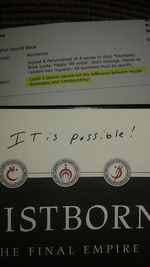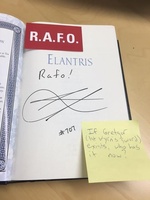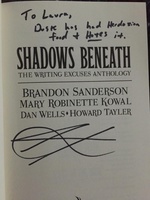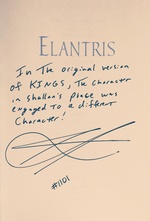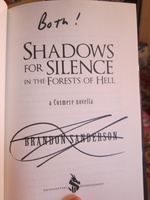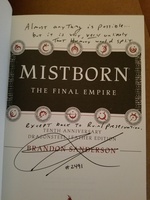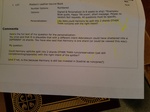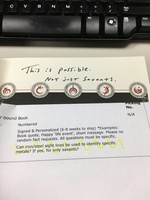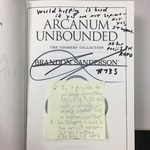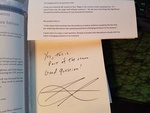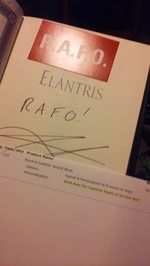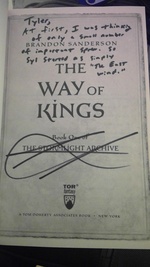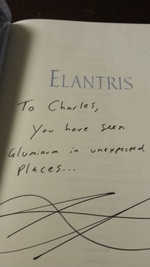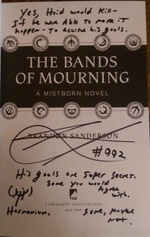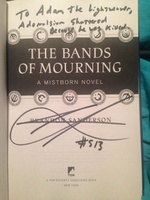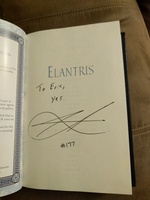Brandon Sanderson
Title Page - Part One
All right, first annotation! About the title page.
I'm generally just going to call this book Mistborn, though the entire series is the "Mistborn Trilogy." Technically, this book is Mistborn: The Final Empire. The second book is Mistborn: The Well of Ascension, and the third book is Mistborn: The Hero of Ages.
There’s an interesting story behind this title. As some of you may know, I spent a number of years trying to get published, writing books all the while. My first five books are what I call the "throwaway books." Those were ones I did mostly as practice, figuring out how to do the whole novel-writing thing. Book six was Elantris, which was published in May of 2005; it was the first book I managed to sell.
However, while I was trying to get Elantris published, I wrote a number of other books. The three after Elantris were big epic fantasy books, much like it in style. After that, I decided that I was writing things that were too big–that no publisher was going to take a huge epic fantasy book from an unknown author. (Though that's eventually what happened. . . .)
Anyway, I decided to try writing some shorter (i.e. only about 125,000 words instead of 250,000 words) fantasy novels. The first of these was what I now call Mistborn Prime. It was the story of a man who was a "Mistborn" (a kind of super-powerful assassin) who gets trapped in a small village with people hunting him, and has to try and blend in with the population there.
Mistborn was a different book for me in many ways. It was shorter, for one thing, and it was also about a kind of anti-hero. It only had one viewpoint character, and the plot was much smaller in scope than my other books. It was successful in some ways, but a failure in others. The magic system I developed for it–Allomancy–was quite spectacular, as were the action sequences. The character, however, didn't appeal to many readers. And, the plot was just a little. . .uninspiring. I'm really better when I have more to deal with.
As you can probably tell, this book–which was unpublishable–became the inspiration for the book I eventually wrote named Mistborn: The Final Empire. We'll cover that second part in the next annotation.

